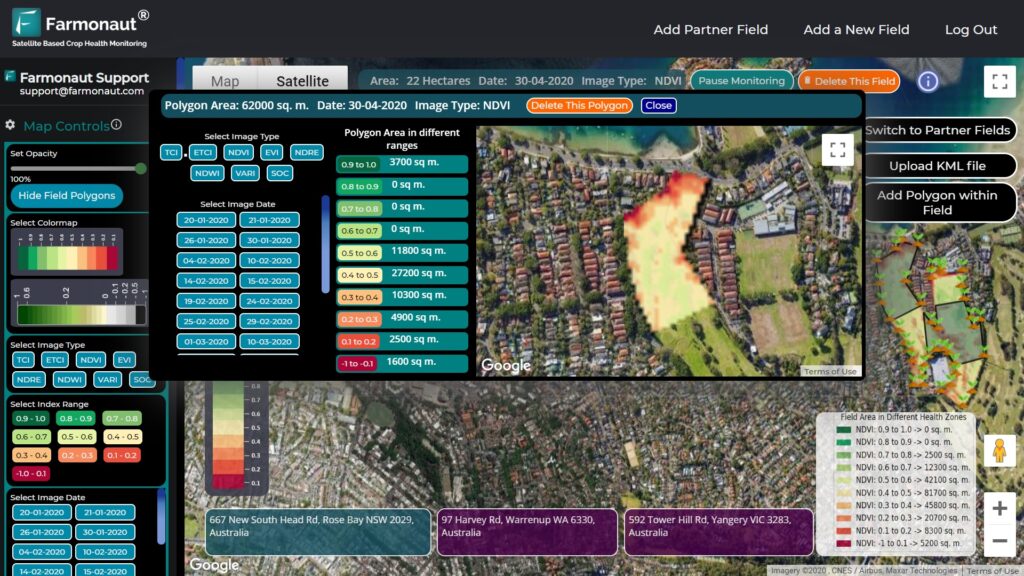California’s Water Crisis: Unpacking Federal Dam Releases and San Joaquin Valley Irrigation Challenges
“Federal dam releases in California affected over 1 million acre-feet of water, impacting San Joaquin Valley irrigation.”
In the heart of California’s agricultural heartland, a surprising turn of events has thrust the state’s complex water management system into the spotlight. We, as observers and stakeholders in the agricultural sector, find ourselves grappling with the ramifications of an unexpected federal decision that has sent ripples through the San Joaquin Valley’s irrigation landscape. This blog post delves deep into the intricacies of California’s water crisis, exploring the recent federal dam releases and their profound impact on irrigation challenges in one of the world’s most productive agricultural regions.

The Unexpected Federal Intervention
In a move that caught many off guard, large volumes of water were released from two federal dams in California’s San Joaquin Valley. This decision, while aiding groundwater replenishment, has raised serious concerns about the availability of water for summer irrigation. The release lowered water levels in critical reservoirs such as Lake Kaweah, sparking a heated debate about the balance between immediate groundwater needs and long-term agricultural water supply.
As we navigate through this complex issue, it’s crucial to understand the various factors at play and their implications for California’s water rights and agricultural future. Let’s break down the key aspects of this situation:
- The timing and volume of the water release
- Impact on reservoir levels and groundwater recharge
- Concerns raised by local farmers and water managers
- The role of federal decision-making in local water management
- Potential long-term consequences for agriculture in the San Joaquin Valley
Unpacking the Federal Dam Releases
The federal dam releases occurred over a three-day period, allowing irrigation water to flow into an extensive network of canals and ditches. While this action had the positive effect of aiding groundwater replenishment, it coincided with a critical time when local agriculture typically prepares for summer irrigation. This timing has raised significant concerns about potential water shortages later in the season, especially considering that California is experiencing some of the driest conditions on record.
Tom Barcellos, president of the Lower Tule River Irrigation District, commented on the situation, stating that while the groundwater recharge is beneficial, the timing of the water release was suboptimal. He characterized the release as a minor inconvenience, suggesting it resulted from an “overzealous” decision-making process in Washington.
The Army Corps of Engineers released the flow from Terminus Dam into the Kaweah River and from Schafer Dam into the Tule River. Unfortunately, this action was taken without adequate prior coordination with local water managers, whose advice was overlooked. This lack of communication has exacerbated tensions between federal authorities and local stakeholders.
Impact on Reservoir Levels and Groundwater
The ramifications of this hasty decision are significant:
- Lake Success dropped from 20% to 18% capacity
- Lake Kaweah fell from 21% to 19% capacity
- Over 2 billion gallons of water were released
Water scientist Peter Gleick criticized the release as wasteful, arguing that this water would not meet immediate human needs, be used for agriculture, or assist with firefighting efforts. However, some local groundwater managers saw the water release as an opportunity for groundwater recharge amid persistent drought conditions. They acknowledged that while the summer demand for irrigation would be compromised, any additional groundwater benefits are welcome amidst substantial over-extraction issues in the region.
The Ripple Effect on San Joaquin Valley Agriculture
The San Joaquin Valley, often referred to as the breadbasket of the world, is now facing unprecedented challenges due to this water management decision. Farmers in the region, who rely heavily on summer irrigation for their crops, are particularly concerned about the potential shortages they may face later in the growing season.
Local activist Dezaraye Bagalayos criticized the federal government’s actions, claiming they negatively impact smaller farmers who are already struggling. She noted that politicians unfamiliar with the complexities of California’s water management exacerbate an already challenging situation.
As we consider the implications for agriculture in the San Joaquin Valley, it’s essential to recognize the role of advanced technologies in mitigating some of these challenges. For instance, Farmonaut’s satellite-based farm management solutions can help farmers optimize their water usage and monitor crop health, potentially offsetting some of the impacts of reduced water availability.

The Political Dimension
The concerns surrounding the abrupt release of water from federal dams amplified following an earlier visit by President Trump to Los Angeles, where he pledged to increase water supplies. This promise came despite the fact that Southern California’s reservoirs were already at capacity levels. The disconnect between federal promises and local realities has further strained relationships between different levels of government involved in water management.
Lawmakers, particularly Democrats from California and Washington, have voiced their alarms in letters directed to high-ranking officials within the administration. They are demanding clarity on the order’s origins and assurances that such uncoordinated actions will not recur. These legislators have articulated that without proper management, the releases could significantly harm local agriculture and long-term water availability.
Balancing Act: Water Conservation in California
This incident underscores the delicate balance required in water conservation efforts in California. As climate change continues to affect water resources, the state must navigate complex issues such as:
- Balancing urban and agricultural water needs
- Maintaining ecological health of rivers and wetlands
- Ensuring long-term sustainability of groundwater resources
- Adapting to changing precipitation patterns and snowpack levels
In this context, innovative solutions for water management and precision agriculture become increasingly vital. Farmonaut’s API and satellite-based technologies offer valuable tools for farmers and water managers to optimize resource use and make data-driven decisions.
California Water Rights: A Complex Tapestry
To fully understand the implications of the federal dam releases, it’s crucial to delve into California’s complex system of water rights. The state operates under a dual system of riparian and appropriative rights, which can sometimes lead to conflicting claims and priorities. The recent federal intervention has brought these complexities to the forefront, raising questions about the balance of power between state and federal authorities in water management decisions.
Key aspects of California water rights include:
- Riparian rights: Rights of landowners adjacent to water sources
- Appropriative rights: Based on the principle of “first in time, first in right”
- Federal reserved rights: Pertaining to federal lands and Native American reservations
- Environmental water rights: Ensuring water for ecosystems and wildlife
The recent dam releases have highlighted the need for better coordination between these various rights holders and regulatory bodies to ensure sustainable water management practices.
“Lake Kaweah’s water level dropped significantly, potentially affecting irrigation for 270,000 acres of farmland in California.”
Irrigation District Challenges
Irrigation districts in the San Joaquin Valley are now facing unprecedented challenges in the wake of the federal dam releases. These districts, which are responsible for managing and distributing water to farmers, must now grapple with reduced water availability and increased uncertainty about future supplies.
Some of the key challenges faced by irrigation districts include:
- Balancing immediate groundwater recharge benefits with long-term surface water availability
- Managing farmer expectations and water allocations
- Maintaining infrastructure with potentially reduced resources
- Adapting to changing federal and state regulations
To address these challenges, many irrigation districts are turning to advanced technologies and data-driven approaches. Farmonaut’s API Developer Docs provide valuable resources for integrating satellite and weather data into irrigation management systems, potentially improving efficiency and decision-making.
The Role of Technology in Mitigating Water Challenges
As California grapples with these complex water management issues, technology is emerging as a crucial tool for farmers and water managers alike. Advanced solutions can help optimize water use, monitor crop health, and improve overall agricultural productivity even in the face of water scarcity.
Some key technological advancements include:
- Satellite-based crop monitoring systems
- AI-powered irrigation management
- Precision agriculture techniques
- Blockchain-based water rights management
Farmonaut’s Android app and iOS app offer farmers easy access to these advanced technologies, enabling them to make data-driven decisions about water usage and crop management.


Looking Ahead: The Future of Water Management in California
As we look to the future, it’s clear that California’s water management challenges will require innovative solutions and collaborative efforts. The recent federal dam releases have highlighted the need for better coordination between different levels of government and stakeholders in the water management process.
Key areas of focus for the future include:
- Improving communication between federal, state, and local water authorities
- Developing more robust drought management strategies
- Investing in water-efficient agricultural practices
- Enhancing groundwater recharge and storage capabilities
- Leveraging technology for better water resource monitoring and management
By addressing these areas, California can work towards a more sustainable and resilient water management system that balances the needs of agriculture, urban areas, and the environment.
Comparative Analysis of Water Management Impacts
| Aspect | Pre-Release Status | Post-Release Status | Short-term Impact | Long-term Implications |
|---|---|---|---|---|
| Reservoir Levels | Lake Success: 20% Lake Kaweah: 21% |
Lake Success: 18% Lake Kaweah: 19% |
Significant Decrease | Potential water scarcity for summer irrigation |
| Groundwater Recharge | Limited due to drought | Increased from dam releases | Moderate Increase | Improved aquifer levels, but concerns over long-term sustainability |
| Summer Irrigation Resources | Adequate for planned use | Reduced availability | Significant Decrease | Potential crop yield reductions, need for more efficient irrigation practices |
| Agricultural Planning | Based on expected water availability | Disrupted due to unexpected release | Moderate Negative Impact | Need for adaptive strategies and potentially altered crop choices |
| Federal-Local Coordination | Limited communication | Increased tension and scrutiny | Significant Negative Impact | Potential for improved dialogue and collaborative decision-making processes |
Conclusion: Navigating California’s Water Future
The recent federal dam releases in California’s San Joaquin Valley have brought to light the complex challenges facing the state’s water management system. While the releases have provided some benefits in terms of groundwater recharge, they have also raised serious concerns about summer irrigation resources and the long-term sustainability of agricultural water supplies.
As we move forward, it’s clear that addressing these challenges will require a multi-faceted approach, including:
- Improved coordination between federal, state, and local water authorities
- Investment in water-efficient agricultural practices and technologies
- Development of more robust drought management strategies
- Leveraging advanced technologies for precision agriculture and water management
By embracing these solutions and fostering collaboration between all stakeholders, California can work towards a more sustainable and resilient water future. Tools like those offered by Farmonaut can play a crucial role in this transition, providing farmers and water managers with the data and insights needed to make informed decisions in an increasingly complex water landscape.
As we conclude, it’s important to remember that the challenges facing California’s water system are not insurmountable. With innovation, cooperation, and a commitment to sustainable practices, we can ensure a thriving agricultural sector and a secure water future for generations to come.

FAQ Section
Q: What caused the recent federal dam releases in California?
A: The federal dam releases were ordered by the federal government to aid groundwater replenishment. However, the decision was made without adequate coordination with local water managers.
Q: How have these releases affected reservoir levels?
A: The releases significantly lowered water levels in reservoirs such as Lake Success and Lake Kaweah, with both dropping by about 2% in capacity.
Q: What are the main concerns for farmers in the San Joaquin Valley?
A: Farmers are primarily concerned about potential water shortages for summer irrigation, which could affect crop yields and agricultural planning.
Q: How can technology help address these water management challenges?
A: Advanced technologies like satellite-based crop monitoring, AI-powered irrigation management, and precision agriculture techniques can help optimize water use and improve overall agricultural productivity.
Q: What steps are being taken to improve water management in California?
A: Efforts are being made to improve coordination between different levels of government, develop better drought management strategies, invest in water-efficient practices, and leverage technology for better resource monitoring and management.
Earn With Farmonaut
Earn 20% recurring commission with Farmonaut’s affiliate program by sharing your promo code and helping farmers save 10%. Onboard 10 Elite farmers monthly to earn a minimum of $148,000 annually—start now and grow your income!
Farmonaut Subscriptions








